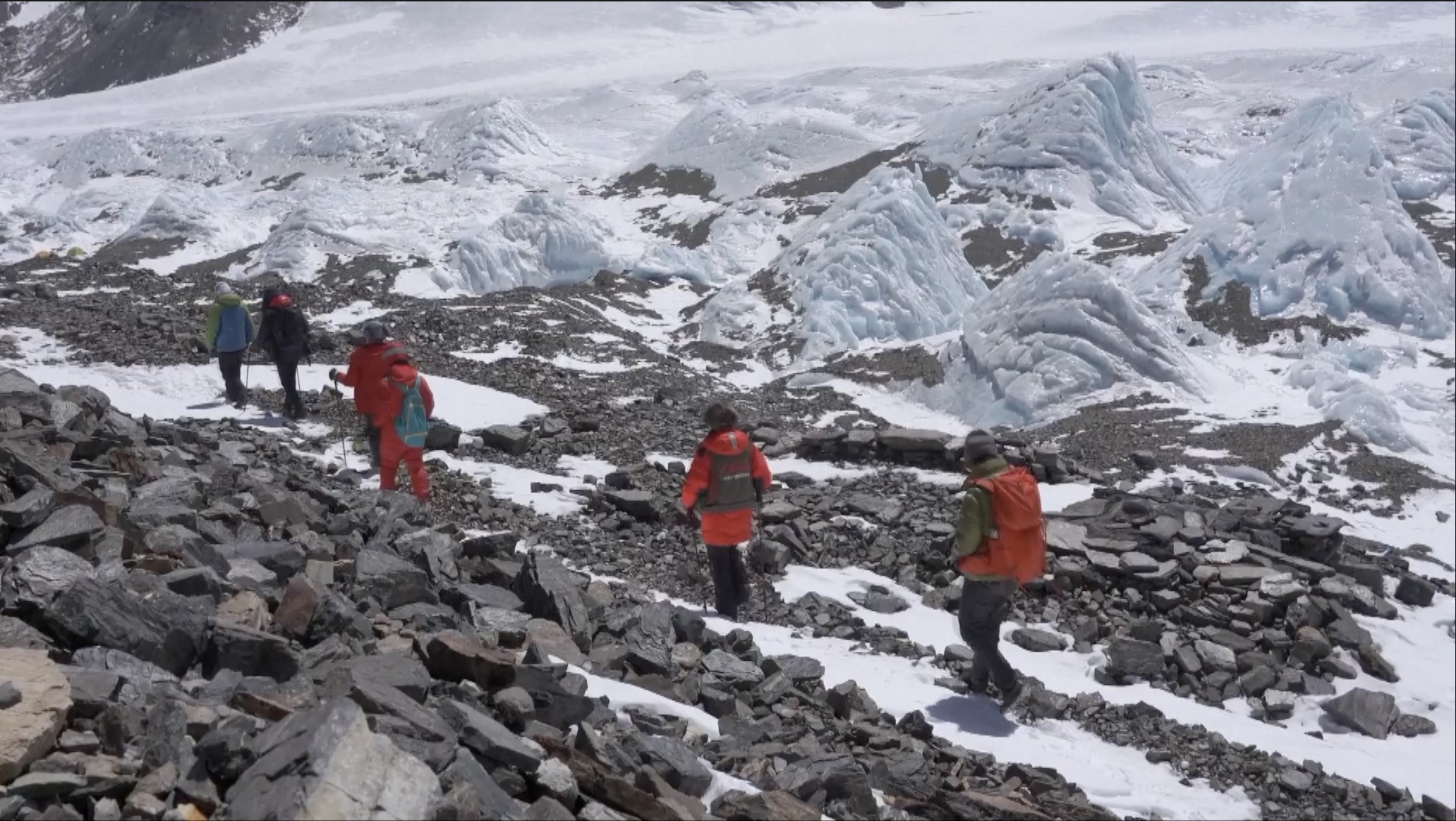00:23

A team of Chinese paleontologists have collected modern sporopollen samples at high-altitude areas in the Mount Qomolangma region in southwest China's Xizang Autonomous Region.
The collection of samples is aimed at helping researchers map out the distribution of plants in different environments and reveal the ecological characteristics in ancient times.
"Simply put, sporopollen is an abbreviation for spores and pollen. Spores mainly come from plants with simple structures like fern and moss. Their organs for reproduction [are spores]. And pollen is mainly the reproductive organ of gymnosperm and angiosperm. It's very tiny but ubiquitous," said Su Tao, a research fellow from the Xishuangbanna Tropical Botanical Garden under the Chinese Academy of Sciences.
Su and his colleagues climbed to the highest sampling point at the altitude of 6,500 meters first, and then went downhill to take samples every 100 meters along the way.
In recent years, Su's team has carried out the collection and study of modern sporopollen in over 2,700 sampling points on the Qinghai-Xizang Plateau. They aim to establish a database of modern surface sporopollen and help to delve into the history of the plateau's ascent from a paleontological perspective by studying the modes of sporopollen propagation and diffusion in extremely high-altitude area.
The study of sporopollen in the ongoing 2023 Mount Qomolangma expedition is a part of the second comprehensive scientific expedition on the Qinghai-Xizang Plateau, which began in 2017.
(If you want to contribute and have specific expertise, please contact us at nature@cgtn.com.)